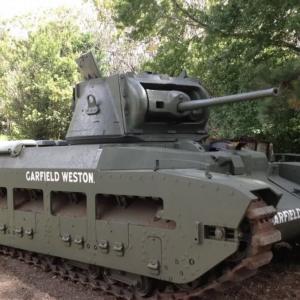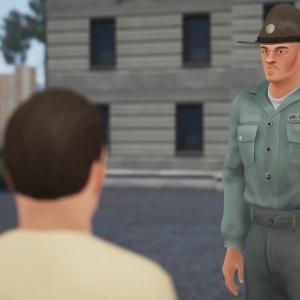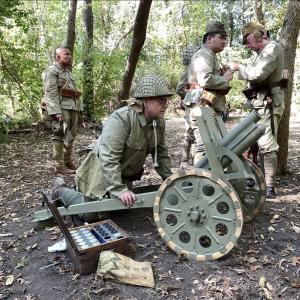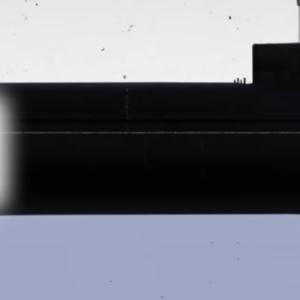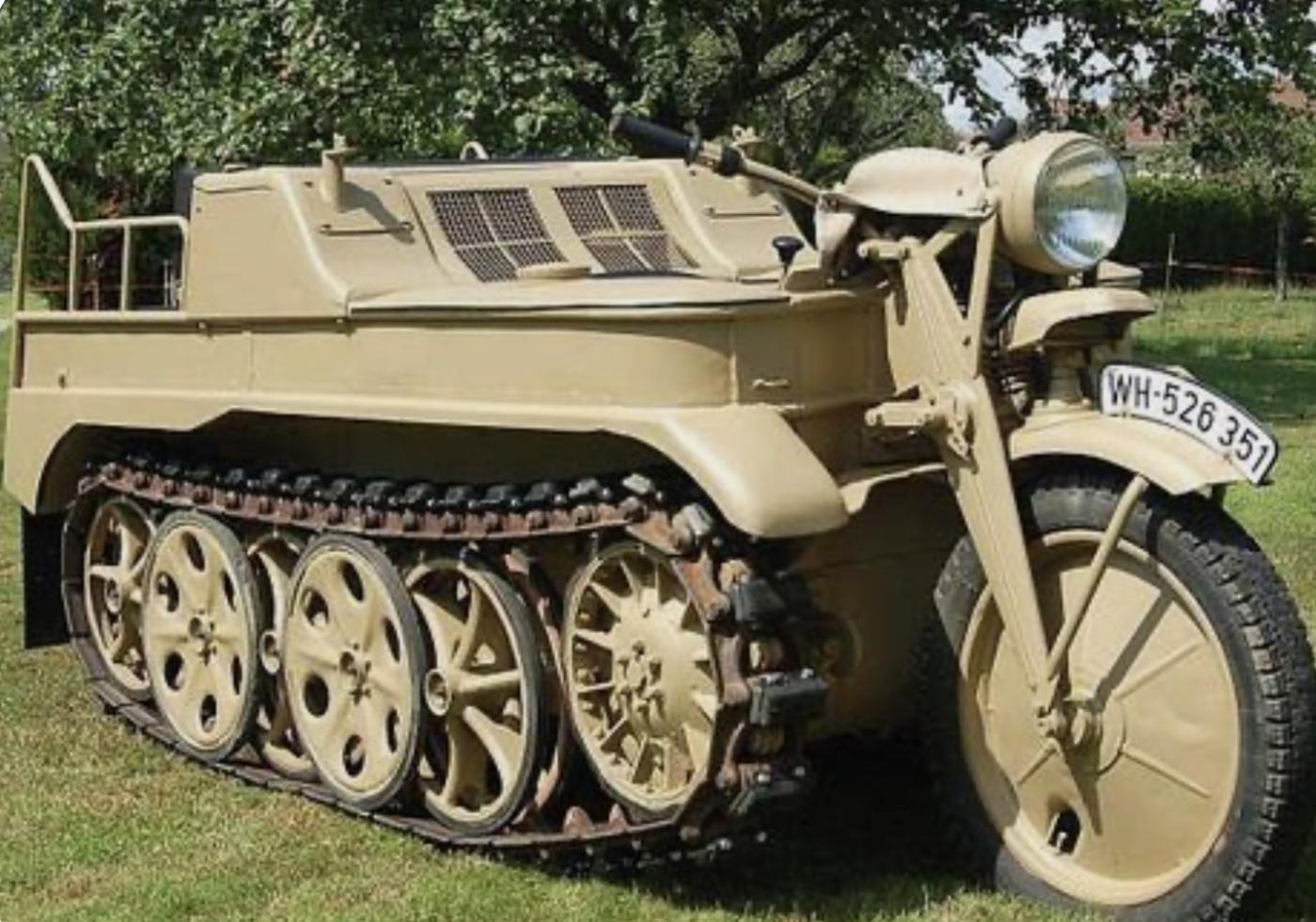
Keltenkrad
The Kettenkrad, officially known as Sd.Kfz. 2, was a compact German half-track vehicle developed during World War II. Designed to bridge the gap between a motorcycle and a tracked transport, it was initially created for airborne forces, as its size and weight allowed it to be loaded into aircraft like the Junkers Ju 52. Its primary advantages were its agility, narrow profile, and ability to operate in rugged terrain where conventional vehicles would struggle. Though initially designed for niche use, it soon found applications in multiple theaters and roles due to its mechanical reliability and adaptability.
Manufactured by NSU Motorenwerke AG starting in 1940, the Kettenkrad was powered by a 1.5-liter Opel Olympia four-cylinder engine delivering 36 horsepower. This gave it a respectable top speed of around 70 kilometers per hour on roads, although speeds were lower on rough terrain. The vehicle’s layout featured a motorcycle-style front fork and wheel with handlebars for steering, combined with a tracked rear section that provided enhanced off-road capability. The front wheel could be disengaged in especially rough terrain, allowing it to steer purely by its tracks.
The Kettenkrad was primarily a transport and utility vehicle, and as such, it was not designed as a combat vehicle or front-line fighting machine. However, in some field applications, particularly on the Eastern Front and during defensive operations late in the war, it was fitted with light armament for self-defense or support roles. The most common weapon associated with the Kettenkrad was the MG34 or MG42 general-purpose machine gun, mounted either on a pintle at the rear or on a bracket fixed near the driver’s position. These were not standard factory installations, but field modifications made by troops to provide cover while transporting supplies or towing equipment through contested zones.
The MG34 and MG42 were both belt-fed 7.92 millimeter machine guns capable of high rates of fire, approximately 900 rounds per minute for the MG34 and up to 1,500 rounds per minute for the MG42. The machine gun, when mounted, could provide suppressive fire against infantry and light targets. Due to the Kettenkrad’s small size and lack of armor, this was mostly used for deterrence or last-resort defense, rather than aggressive action.
In rare documented cases, some Kettenkräder were also seen transporting panzerfausts, anti-tank grenade launchers carried by the crew rather than mounted on the vehicle itself. These portable weapons were ideal for ambushes and mobile infantry tactics. Crews might also carry Kar98k rifles or MP40 submachine guns for personal defense, but these were standard infantry arms rather than fixed vehicle armament.
Despite the ability to mount light weapons, it’s important to remember that the Kettenkrad remained a logistical and support vehicle first and foremost. Its roles included cable-laying, towing light artillery or trailers, ferrying supplies, transporting wounded soldiers, and serving as a messenger or communication vehicle in areas with poor road access. It was particularly effective on the Eastern Front, where snow, mud, and forest terrain rendered wheeled vehicles nearly useless. The tracked design gave it excellent traction, and its compact footprint allowed it to move along narrow forest paths, trenches, or between ruins in urban settings.
Over the course of the war, more than 8,000 Kettenkräder were produced. While not heavily armed or armored, their value came from reliability and utility. As German forces were increasingly forced into retreat or guerrilla-style defensive operations, especially in 1944 and 1945, more Kettenkräder were retrofitted with weapon mounts to support mobile machine-gun teams or small defensive positions.
After the war, production briefly resumed for civilian agricultural use, particularly in vineyards and mountainous regions, up to 1949. These postwar versions typically lacked any military fittings or mounts and were purely utilitarian. However, the core mechanical design remained unchanged, which testified to the vehicle’s practical and rugged engineering.
Today, surviving Kettenkräder are prized by collectors and military historians. Restored examples often feature MG34 replicas or other period-correct accessories to reflect how they may have appeared in field conditions. Despite its small size, the Kettenkrad played a valuable role in logistics and mobility, especially in terrain where other motorized transport could not function. It remains a unique and memorable example of Germany’s attempt to adapt to the complex demands of mechanized warfare during the Second World War.

